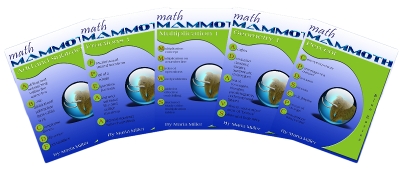Let's talk math.
Okay, be honest... how many of you shuddered at the very thought of it? Personally, I have never had any issues with math, but I know that it is a common struggle among both adults and children alike. We want our children to do well in school (in all subjects), but how can we do that when it's not something we enjoy ourselves?
Today, I'm sharing a few simple tips to help encourage and improve our child's math skills:
- Make it fun. Kids learn best when learning is made fun. Create little games (or purchase pre-existing games) that are designed to practice the skills they are currently working on. Create songs that teach these important skills (which can also help with memorization). Think outside the box to make it a little more entertaining. Working on fractions? Consider using candy or a child's favorite treat to bring those example to life. In one of my favorite movies 'A Walk to Remember' there is a scene where they approach learning angles through basketball. By taking something your child loves, they will be more excited and motivated to learn.
- Incorporate math into your daily life. Okay, so we might not use algebra every day... but there are many math skills that we DO use often. Cooking can be a great example of this, especially when learning fractions. When you are out shopping, allow your child to help pay, or give them a select amount of money and allow them to figure out what they can purchase (factoring in tax, etc).
- Lead by example. As I said, not everyone has a positive reaction to math and that's fine. We all have different strengths and weaknesses, and it's even okay to let our kids know that too. Still, there is a difference in admitting to your child that you struggle with it versus that you cannot stand it. One says we're not perfect, but keep on trying whereas the other says it stinks and isn't even worth it. If we keep an optimistic attitude about it, our kids are more likely to keep trying to as well.
- Understand, Not Memorize. It is important that children don't just memorize math facts, but also understand the concept behind it as well. Memorization might be fine for basic math, but as they advance, they need that foundation to be able to grow and apply those concepts to harder problems.
- Practice, practice, practice. Math- like so many things in life- requires a lot of practice. The more we do it, the easier it becomes. Even going over the basics can be a great way to keep those skills fresh (and encourage confidence too).
So, who is Math Mammoth?

Math Mammoth offers affordable, quality math worktexts and workbooks for elementary and middle school students. Whether you are looking for a complete curriculum, supplemental work or extra practice they offer a great variety of products to meet those needs. They offer a complete math curriculum for grades 1-7 including worktexts in all the various math topics taught in those grades. That includes everything from basic addition all the way through fractions, percents, statistics and equations. They also offer review workbooks and a wide variety of free math videos (great for kids like my own child who like that visual aid!) These tools are mastery-oriented, and focuses on conceptual understanding. Mental math and number sense are emphasized.


As you can see, Math Mammoth materials are very versatile and accommodate the needs of both parents and teachers. From complete math curriculum, review materials, filling in gaps, or real-life math supplements, they have a large variety of resources to meet you and your child where you are with what you need. You can learn more about all of these resources and start growing your child's math skills by visiting here.
And even better, right now you can take 28% Off of All Math Mammoth Downloads & CDs with the exclusive coupon code RANDIKAYE. Head on over and get started today.
Does your child struggle with math? What tips have you found to help encourage them? Which tools from Math Mammoth could your child most benefit from?


I learned math when playing cribbage with my father. I was always best in school adding 8&7 and 9&6 and 10&5.
ReplyDelete